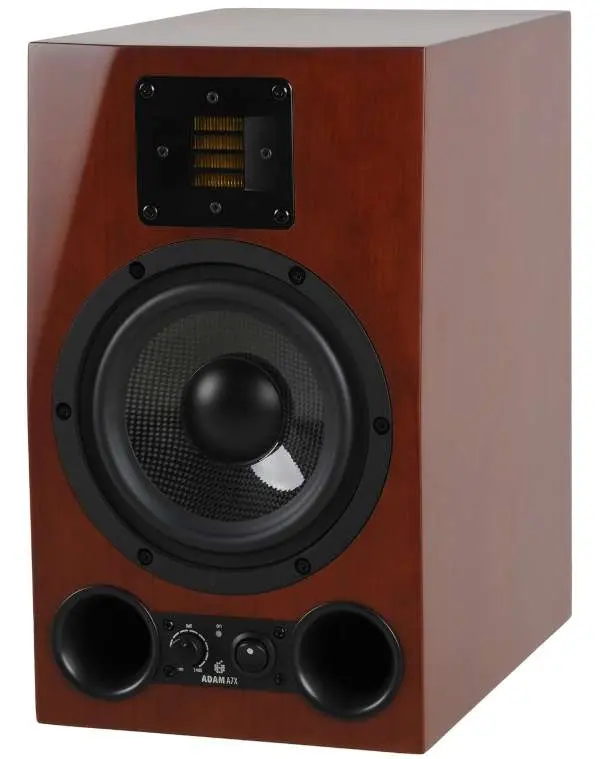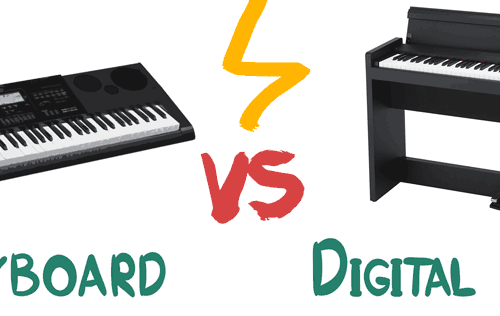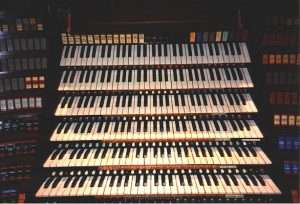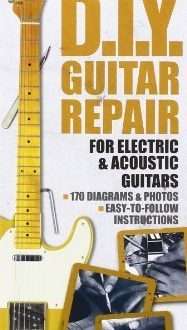
Which studio monitors to choose?
See Studio monitors in the Muzyczny.pl store
Studio monitors are one of the basic, if not the most important tools that music producers, even beginners, need. The best guitar, microphone, effects or even expensive cables will not help us if we place small computer speakers at the end of the chain, through which nothing can be heard.
There is an unwritten theory that of all the money we want to spend on studio equipment, we should spend at least a third on listening sessions.
Well, maybe I do not fully agree with it, due to the fact that monitors for novices do not have to be so expensive, but working with them will be much more effective.
Will HI-FI speakers work well as studio monitors?
I often hear the question – “Can I make studio monitors out of ordinary HI-FI speakers?” My answer is – No! But why?
The hi-fi speakers are designed to give the listener a pleasure while listening to music. For this reason, they can hide the shortcomings of the mixes from him. For example: cheaper hi-fi designs are characterized by a contoured sound, boosted upper and lower bands, so that such sets convey a false sound image. Secondly, the hi-fi speakers are not designed for long, long hours of use, so they may simply not stand up to our sonic experiments. Our ears can also get tired, exposed to listening through hi-fi speakers for a long time.
In professional sound studios, monitors are not used to ‘sweeten’ the sound that comes out of them, but to show dryness and any flaws in the mix, so that the manufacturer can fix these shortcomings.
If we have such an opportunity, let’s put a set of hi-fi speakers next to the studio set in order to check how our recording will sound on such listening sessions that are found in every home.
Passive or active?
This is the most basic division. Passive sets require a separate amplifier. A studio amplifier or a decent hi-fi amplifier will work here. At present, however, passive auditions are being replaced by active constructions. Active listening sessions are monitors with a built-in amplifier. The advantage of active designs is that the amplifier and speakers are matched to each other. Active monitors are the most recommended choice for home studio. All you have to do is connect it to a power source, connect a cable to the audio interface and you can record.

What else is worth knowing?
When choosing, the best way is to test several sets of monitors for the best results. Yes, I know, it’s not easy, especially in small towns, but is it a big problem? Enough to go to such a store in another city? After all, this is an important purchase, it is worth approaching it professionally. It’s worth the trouble, unless you want to spit in your chin afterwards. Be sure to use the recordings that you know exactly for the tests. What to pay attention to when testing?
Primarily:
• test monitors at different volume levels (with all bass bossts and other enhancers off)
• Listen carefully and check if each band sounds clearly and evenly.
It is important that none of them stand out, after all, the monitors are to show the imperfections of our production
• check that the monitors are made of appropriate quality materials.
There is a belief (and rightly so) that the heavier the monitors, the better their quality, check if their volume satisfies you.
Whether they are passive or active monitors, the choice is yours. Certainly, buying passive monitors will cause more problems, because you need to take care of the right amplifier. This involves searching for and testing various amplifier configurations. The matter is much simpler with active monitors, because the manufacturer selects the appropriate amplifier – we do not have to worry about it anymore.
In my opinion, it is also worth looking for used monitors from a reputable company, if we get a well-kept copy, we will be much more satisfied than with the new, but cheapest, computer-like speakers.
It’s also a good idea to go to the store and listen to a few sets. I think that most stores that care about a customer will provide you with this option. Take a CD with recordings with many details and sonic nuances. Try to have several different music genres there and record some of your production there for comparison. The album should contain both great-sounding productions, but also weak ones. Interview them from all angles and draw the appropriate conclusions.
Summation
Remember that even on inexpensive monitors, you can make a correct mix, if you have the right skills and, above all, you learn the sound of your monitors and the room. After some time you will know where and how much they are distorting. Thanks to this, you will take an allowance for it, you will start to interact with your equipment and your mixes will sound like you want it over time.





